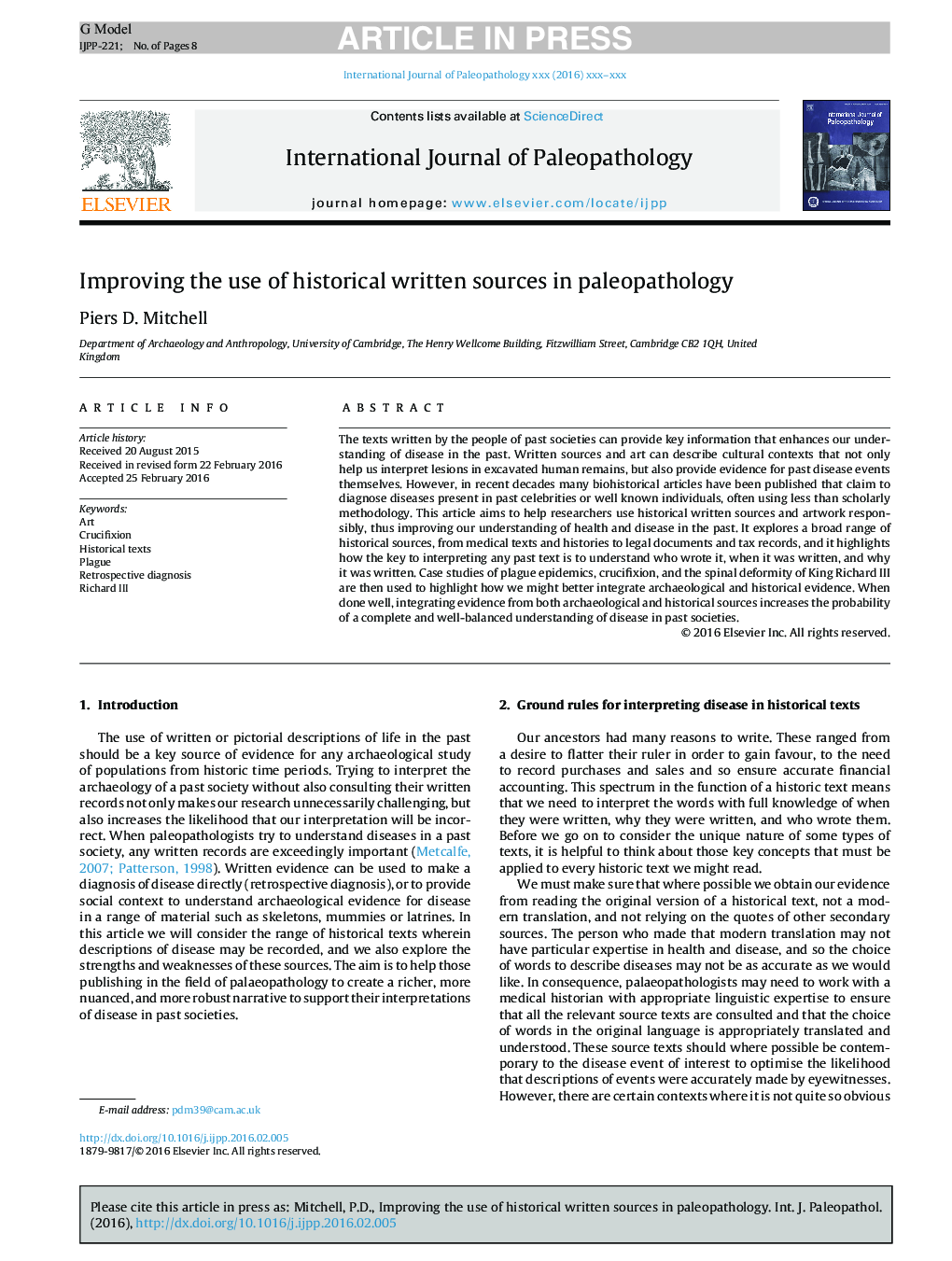| Article ID | Journal | Published Year | Pages | File Type |
|---|---|---|---|---|
| 6554806 | International Journal of Paleopathology | 2017 | 8 Pages |
Abstract
The texts written by the people of past societies can provide key information that enhances our understanding of disease in the past. Written sources and art can describe cultural contexts that not only help us interpret lesions in excavated human remains, but also provide evidence for past disease events themselves. However, in recent decades many biohistorical articles have been published that claim to diagnose diseases present in past celebrities or well known individuals, often using less than scholarly methodology. This article aims to help researchers use historical written sources and artwork responsibly, thus improving our understanding of health and disease in the past. It explores a broad range of historical sources, from medical texts and histories to legal documents and tax records, and it highlights how the key to interpreting any past text is to understand who wrote it, when it was written, and why it was written. Case studies of plague epidemics, crucifixion, and the spinal deformity of King Richard III are then used to highlight how we might better integrate archaeological and historical evidence. When done well, integrating evidence from both archaeological and historical sources increases the probability of a complete and well-balanced understanding of disease in past societies.
Keywords
Related Topics
Life Sciences
Biochemistry, Genetics and Molecular Biology
Physiology
Authors
Piers D. Mitchell,
